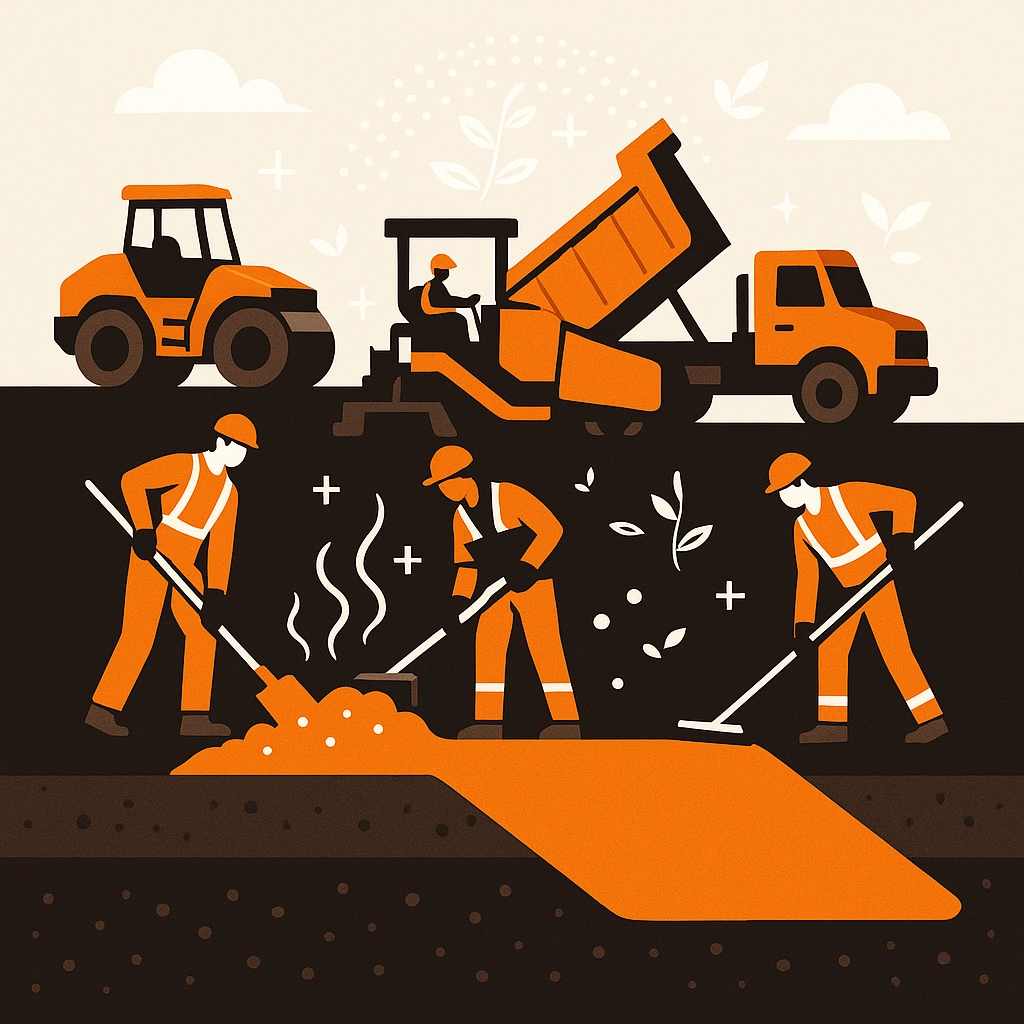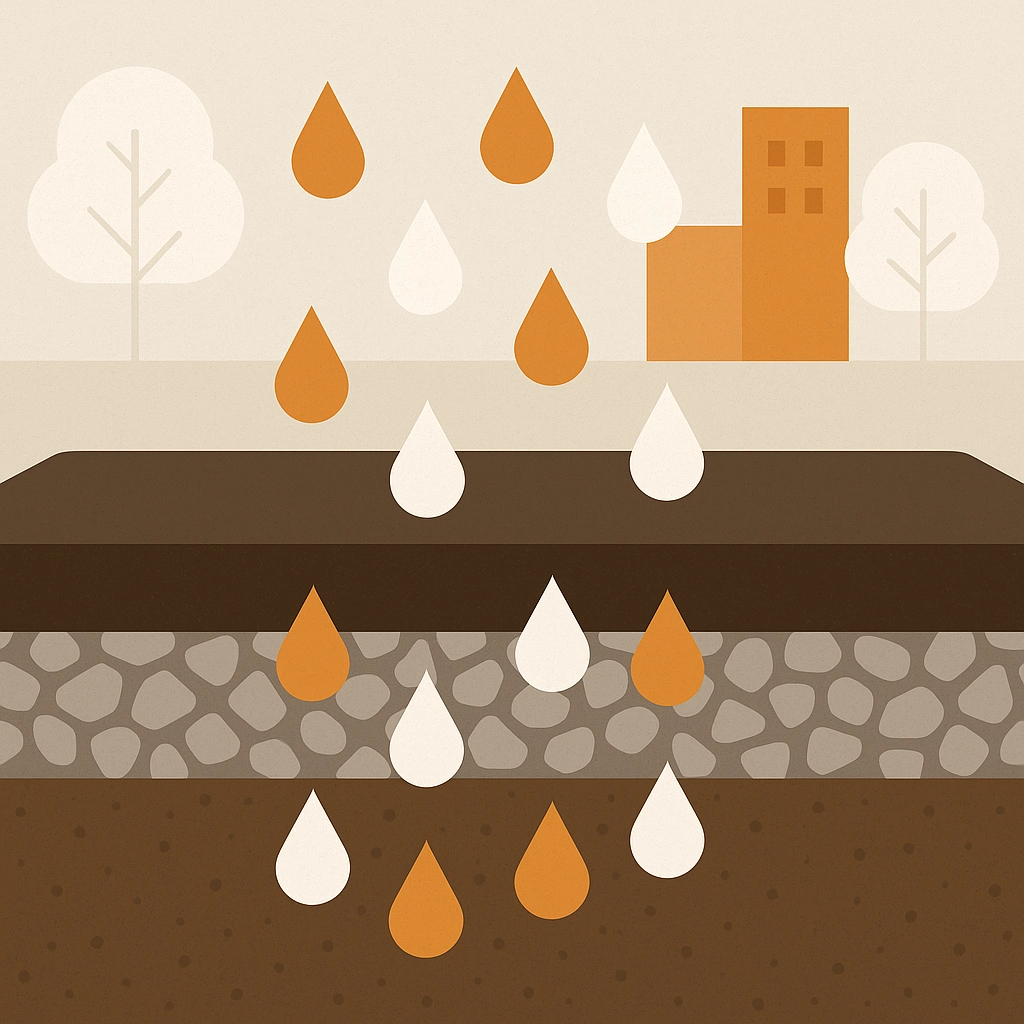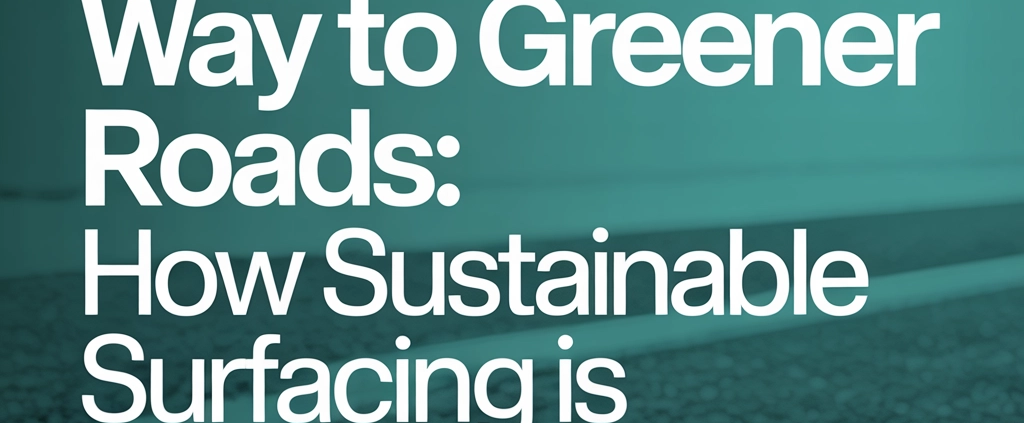Paving the Way to Greener Roads: How Sustainable Surfacing Is Shaping the Future
Sustainable road surfacing is no longer a far-off vision or industry buzzword—it's happening right now, and it’s redefining the way we build, maintain, and experience the roads we travel. As concerns about resource scarcity, climate change, and urban flooding rise, the road construction industry is innovating in ways that balance environmental stewardship with performance and cost. Here at J.C. Surfacing Ltd, we’re proud to be part of this movement and excited to share what the future holds for greener roads.
Revolutionary Materials and Technologies
The backbone of a greener road network rests on new and improved materials that limit environmental impact without compromising durability or usability. In practice, this means swapping out traditional, energy-intensive materials or processes for newer, smarter solutions designed with sustainability in mind.
Warm Mix Asphalt: Changing the Temperature Game
One of the notable breakthroughs is warm mix asphalt (WMA). Unlike hot mix asphalt—which needs to be heated to very high temperatures—WMA is produced and laid at significantly lower temperatures. This simple tweak saves a ton of energy, slashes carbon emissions, and creates safer working conditions for surfacing crews. Since 2014, over four million tonnes of warm mix asphalt have been laid on UK roads. To put that in perspective, the shift to making WMA the standard could save more than 21,000 tonnes of CO₂ per year—the same as thousands of transatlantic flights!

Maximising the Value of Recycling
Recycling isn’t just for your kitchen bin. In the surfacing world, using Recycled Asphalt Pavement (RAP) is one of the most impactful strategies for resource conservation. RAP takes the old asphalt from road repairs or demolitions, processes it, and blends it into new surfacing mixes. Beyond RAP, the industry is experimenting with recycled construction debris, steel slag, and even shredded tires from end-of-life vehicles. These “waste” materials don’t just help reduce landfill pressure—they also bring unique performance perks, like improved surface grip or better flexibility in temperature extremes.
New Stabilisation Methods and Additives
Additives are also playing a larger role in boosting sustainability. Modifying asphalts with natural latex from rubber plants or organic fibres like hemp is showing real promise. Techniques like geopolymer stabilisation, which uses industrial by-products instead of cement, cut down on greenhouse gas emissions and support circular economies. These approaches strengthen roads against wear and tear while supporting environmental and economic goals.
Environmental and Performance Benefits
Switching up what goes into our roads has a powerful ripple effect, benefitting everything from carbon reduction to water quality and local wildlife.
Serious Cuts to the Carbon Footprint
The most tangible win is the drop in CO₂. By combining warm mix technology, recycled content, and renewable fuels, projects like the UK’s first net zero road surfacing on the A64 Bramham have reduced their carbon footprint by an incredible 75%. The industry has proven these methods work for large projects and is pushing hard to make low-carbon surfacing business as usual.
Game-Changing Water Management
Cities and communities are seeing more intense rainstorms and flooding, so drainage matters more than ever. Sustainable surfacing is answering the call with permeable pavement systems. These allow water to pass through and filter naturally into the ground, reducing stormwater runoff and lessening the burden on urban drainage systems. Permeable surfacing also helps cut down the risk of localised flooding, replenishes groundwater, and improves the resilience of public infrastructure.

Promoting Biodiversity and Restoring Habitats
Green road verges lined with native plants are doing more than just looking nice. They boost local biodiversity, give pollinators and small animals safe passage, control soil erosion, and create a buffer between traffic and the wider environment. Carefully selected plantings can even filter pollutants from road runoff, further protecting nearby waterways.
Real-World Implementation and Success
It’s one thing to read about sustainable technology—it’s another to drive across it. In recent years, sustainable surfacing has made the leap from test tracks into daily life.
Net Zero Surfacing in Practice
The A64 Bramham project stands as an example of how far we’ve come. Through clever mix designs (blending biogenic binder, industrial waste, and durable aggregates), use of renewable energy in construction, and ultra-precise machinery to eliminate waste, this project delivered a 75% reduction in carbon emissions—without a drop in performance.
Microstructural Research: The Science Behind Stronger Roads
Researchers are using microscopic analysis to understand what makes greener surfacing so tough and dependable. These studies have revealed how recycled components and new additives bind together, fill in gaps (reducing porosity), and form stabilising chemical bonds—helping roads cope with heavy traffic and changing weather.
Environmental Safety Assessments
Testing for ecological impacts is another critical step. The latest assessments confirm that these new surfacing mixes—often containing waste materials—do not pose extra risks to plants, animals, or water systems. That’s given regulators and customers the peace of mind to approve wider use of eco-friendly surfacing on UK roads.
Challenges and Opportunities Ahead
The progress is impressive, but there’s plenty left to do to make sustainable surfacing the norm everywhere.
Standardising Mix Designs
Adopting green tech at scale means developing consistent mix designs and material specifications. The challenge is to balance durability, cost, and sustainability to suit different climates, traffic loads, and project budgets.
Lifespan and Performance Data
Long-term testing is crucial. Engineers and researchers are now focusing on real-world trials across various traffic levels, road types, and environmental conditions to ensure that eco-friendly roads last just as long (or longer) than conventional options.
Pushing Toward Net Zero by Default
Sustainable surfacing is moving from “premium” to “standard.” The expectation is shifting: in just a few years, the norm will be for road builders to aim for net zero carbon emissions unless there’s a compelling reason not to.
Balancing Cost and Durability
Finding ways to scale eco-friendly options while keeping prices competitive is another piece of the puzzle. Excitingly, as recycled materials, warm mix manufacturing, and new additives become more mainstream, costs are dropping and the lifespan of surfaced roads is increasing—delivering better value over the long haul.

How J.C. Surfacing Ltd is Supporting Greener Roads
At J.C. Surfacing Ltd, we’re actively implementing these technologies and approaches across a variety of surfacing projects. Whether we’re installing a commercial car park, upgrading school sports facilities, or laying a new domestic driveway, our team is committed to materials and methods that reduce our collective carbon footprint and support better water management. We regularly source recycled materials, employ energy-saving warm mix techniques, and incorporate natural green verges into our designs for added environmental benefit.
If you’d like to learn more about our commitment to sustainability or explore how we can deliver greener surfacing solutions for your next project, visit our About Us page or contact us today.
Green surfacing is here now—combining modern science, smart design, and responsible stewardship of our environment. The roads of tomorrow aren’t just about connecting point A to point B; they’re about building a more sustainable path for everyone.














